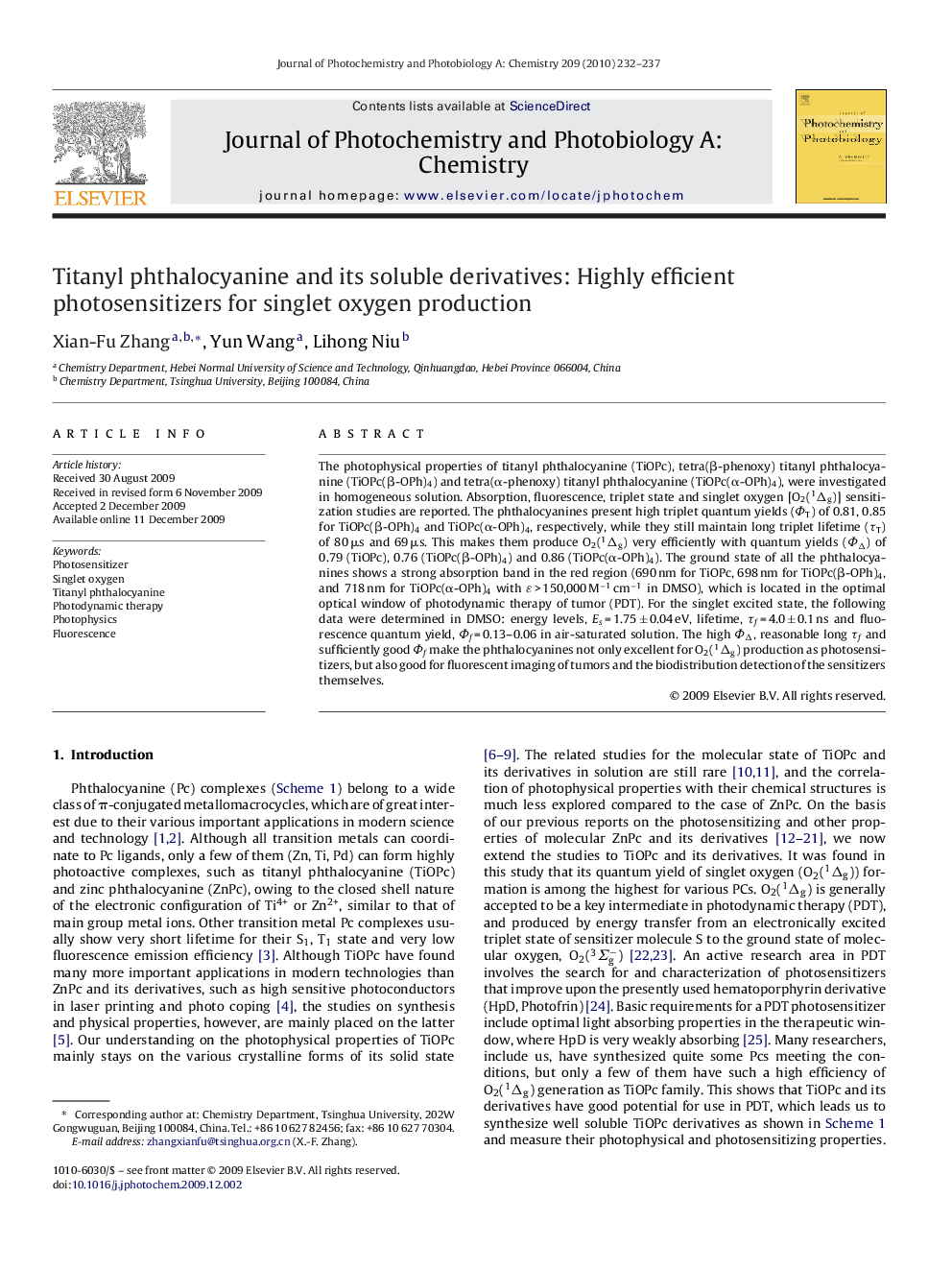| Article ID | Journal | Published Year | Pages | File Type |
|---|---|---|---|---|
| 27165 | Journal of Photochemistry and Photobiology A: Chemistry | 2010 | 6 Pages |
The photophysical properties of titanyl phthalocyanine (TiOPc), tetra(β-phenoxy) titanyl phthalocyanine (TiOPc(β-OPh)4) and tetra(α-phenoxy) titanyl phthalocyanine (TiOPc(α-OPh)4), were investigated in homogeneous solution. Absorption, fluorescence, triplet state and singlet oxygen [O2(1Δg)] sensitization studies are reported. The phthalocyanines present high triplet quantum yields (ΦT) of 0.81, 0.85 for TiOPc(β-OPh)4 and TiOPc(α-OPh)4, respectively, while they still maintain long triplet lifetime (τT) of 80 μs and 69 μs. This makes them produce O2(1Δg) very efficiently with quantum yields (ΦΔ) of 0.79 (TiOPc), 0.76 (TiOPc(β-OPh)4) and 0.86 (TiOPc(α-OPh)4). The ground state of all the phthalocyanines shows a strong absorption band in the red region (690 nm for TiOPc, 698 nm for TiOPc(β-OPh)4, and 718 nm for TiOPc(α-OPh)4 with ɛ > 150,000 M−1 cm−1 in DMSO), which is located in the optimal optical window of photodynamic therapy of tumor (PDT). For the singlet excited state, the following data were determined in DMSO: energy levels, Es = 1.75 ± 0.04 eV, lifetime, τf = 4.0 ± 0.1 ns and fluorescence quantum yield, Φf = 0.13–0.06 in air-saturated solution. The high ΦΔ, reasonable long τf and sufficiently good Φf make the phthalocyanines not only excellent for O2(1Δg) production as photosensitizers, but also good for fluorescent imaging of tumors and the biodistribution detection of the sensitizers themselves.
